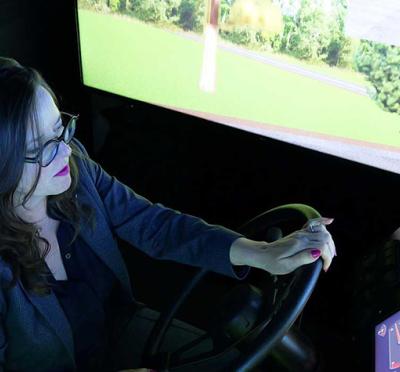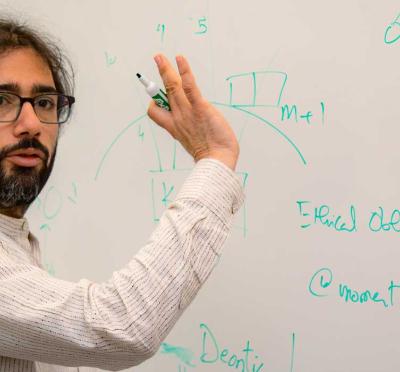Ken Williamson joined the College of Engineering as an undergrad, stayed for his master’s degree, returned as a professor, and eventually became a school head. Now, a decade into his ‘retirement,’ he’s a key industry partner.
Ken Williamson, B.S. civil engineering ’68, M.S. environmental engineering ’70, has spent more than 40 years researching wastewater and hazardous waste treatment and sustainable environmental management. His research has led to genetic and molecular methods to monitor pathogens in wastewater, to achieve greater pollutant removals from biological treatment processes, and to lower wastewater treatment costs.
Along the way, the professor emeritus of environmental engineering headed two schools in the College of Engineering and helped grow the college’s environmental engineering research program to national prominence.
Yet at the heart of his success is his love of teaching.
“I used to tell students the engineering field is so broad that no matter who you are or what you want to do, you can find your niche somewhere,” Williamson said. “It took me a while to discover what my niche was. But I decided I wanted to be a teacher, and I almost left engineering.”
Luckily, when Williamson was an undergraduate, one of his professors pointed out that he could do both — all he needed was a doctorate, and he could be a professor.
“And from that day on, my objective was to get a Ph.D. and come back and teach at a major engineering school,” Williamson said. “And that’s what I did for most of my life.”
Williamson received his bachelor’s and master’s degrees from Oregon State University. After completing his doctoral work at Stanford University, he realized that “the quality of the education at OSU far exceeded what students at Stanford were receiving at that time.” So, he was excited when Oregon State offered him a position as an assistant professor of civil and construction and environmental engineering.
When Williamson joined the College of Engineering in 1973, there was only one other professor focused on environmental engineering. “That other faculty member passed away six months after I was here, and so, I was the only environmental engineering faculty at OSU, and I was straight out of graduate school.”
At the time, Williamson says, it was still a very “traditional” engineering program.
“The attitude then was clearly that it was the student’s responsibility to be successful, and if they can’t pull it off, then they don’t deserve to be engineers,” he said. “Now, we’re into really trying to help students overcome everything limiting their opportunities in engineering.”
Williamson played a role in that attitude shift — first as a professor; then as head of the Department of Civil, Construction, and Environmental Engineering; and later as head of the School of Chemical, Biological, and Environmental Engineering.
When he retired from Oregon State in 2012, he joined Clean Water Services, the water resources management utility for more than 600,000 Oregon residents. He served as director of regulatory affairs for six years and became director of research and innovation in 2018. Today, he leads efforts to promote advancement in wastewater treatment, regulatory innovation, business operations, and environmental restoration.
But his collaboration with Oregon State hasn’t stopped.
Early on in the COVID-19 pandemic, the Oregon Health Authority awarded Oregon State $5.6 million to develop and lead a statewide monitoring program to examine levels of the SARS-CoV-2 virus in wastewater and detect the presence of variants of concern.
The effort is led by Tyler Radniecki, associate professor of environmental engineering, in collaboration with Christine Kelly, professor of bioengineering, and a number of other researchers across the university. They reached out to Williamson and CWS to help.
“The three of us started from ground zero and built that thing in a matter of months,” Williamson said. “We had to figure out how to do the sampling, how to do the testing, how to get funding. We had to build the lab to actually do the testing. All of that, we did with just incredible speed, and it’s been an amazing success that will carry on far into the future.”
Oregon State was a great place to pull off such a huge effort, Williamson says.
“Part of it was that I knew the people, had good collaborations, and I trusted them,” he said. “There’s a certain flexibility at OSU, and the ability for faculty here to work in teams.”
With additional funding through the university’s TRACE project and data from multiple Oregon communities, the team has correlated coronavirus wastewater concentrations with the prevalence of the virus at neighborhood scales to estimate the number of COVID-19 infections in a community.
“That, I think, was probably my greatest achievement professionally, building this big program from scratch,” Williamson said.
In November, Williamson was named to the College of Engineering’s Academy of Distinguished Engineers during the 2021 Oregon Stater Awards.





